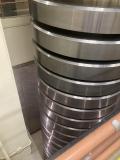Sunday, July 21, 2024
By:
Have you ever faced a series of flat surfaces regularly offset from each other in a horizontal and vertical displacement? Have you wondered about the best techniques for handling these stationary escalator devices powered solely by you? I have had a good share of stairs, climbing about 888 floors last semester. As such, I would consider myself an experienced chair connoisseur. So, worry not about these tiny, open-walled, inoperational elevators placed in close proximity, we will cover all the important features of good stair handling.
Downstairs: This notably, is a lot easier energy-wise. It's a lot less power-intensive to stop yourself from flying into a wall than it is flying into a wall. However, knees are difficult. Improper form can exert undue wear and tear. There are several techniques to approach this discretized hill.
First, The March. The most common approach involves putting one foot in front of the other at a regular tempo and coming to a stable position after each step. While it may seem basic, there are a few things to watch out for. Not having some give in the knees will cause a significant impact on the knee whenever the foot makes contact with a step. You can also adjust this technique to The Controlled Fall where you don't take the time to come to a complete stop and let your center of mass move continuously down the stairs. This approach requires more bend to the knees to accommodate for the fall of the center of mass.
Second, The Skip. This involves breaking free of the standard walking rhythm by putting some syncopation into your steps. You first replace a simple lift step with a small hop on each foot. You then offset each jump by about an eighth of a cycle. This delay is important to be able to properly gauge the velocity of the hop. The hop should take you down exactly one step. Attempting to go farther will increase the risk of miscalculating the jump and causing injury. The advantage of this one is that it has a nice flow to it. Its unique pace is also helpful if stuck behind someone as your clip-clopping will politely inform them to get out of the way. However, make sure to change the foot you start with with. Most of the impulse to stop your mini-fall comes from the second foot. By swapping which foot leads, you can ensure that you will need symmetrical knee replacements when you're 70.
Third, The Diagonal. When you climb down as many steps as I have, you start setting goals for yourself to keep things interesting. A classic goal is speedrunning steps. Not only is this practical in terms of the time you save, but also opens up a chance at the forbidden staircase to descend, the up escalator. To accomplish this technique. Angle your feet at a sixty-degree angle to the stairs. They should be turned away from the edge of the stairs. Then, quickly enact The Controlled Fall. The advantage of The Diagonal is that you don't have to move your feet as far beyond an edge to clear it, allowing your feet to be falling sooner. This technique once mastered can let you on stairs to outrun The March going down a down escalator. Remember to bend the knees as the rapid-fire collision could be a quick trip to your nearest orthopedic surgeon without it.
Upstairs: The issue with going upstairs is that you are going upstairs. It's exhausting. Thus, usually, the most energy-efficient approach is the preferable one. The March. The upside of the march is the variable speed you can achieve with it. This allows for flexible ascension depending on your exhaustion levels. This can be further customized by bypassing stairs. This is technically also doable with The Downwards March, but the risk of fall makes it undesirable, just use The Controlled Fall.
The Upwards Slide: The Spirtual Successor to The Controlled Fall. It operates on a similar principle, keep your center of mass moving in a straight path smoothly. This involves some decent bend to your knees to accomplish this. The advantage of this approach is the speed. By not having jarring steps and stops, you can use your momentum to help you push forward. Decreasing the effort needed to get appreciable speed, allows you the possibility of beating a down escalator. The increased energy requirement though does make this unfavorable for a long climb with shorter flights.
Evan Erickson




